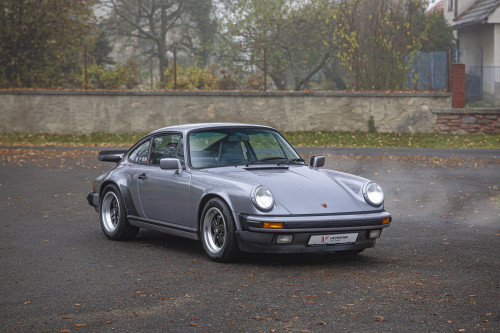The Mitsubishi Lancer Evolution series has long been revered among automotive enthusiasts for its exceptional performance, rally heritage, and cutting-edge technology. Among these revered models, the Lancer Evo VIII stands out as a prime example of the brand's commitment to engineering excellence and high-performance driving experiences.
Evolution of a Legend
The Evolution VIII is a testament to Mitsubishi's continuous innovation in the realm of sports cars. Introduced in the mid-2000s, this iteration of the Evolution series pushed the boundaries of what was achievable in a compact sedan, combining power, agility, and advanced engineering to create a driving experience that thrilled enthusiasts worldwide.
Power and Performance
At the heart of the Lancer Evo VIII MR FQ320 lies a potent 2.0-liter turbocharged inline-four engine. With meticulous tuning and enhancements, this powerhouse generates an impressive 320 horsepower and 419 Nm of torque. The combination of a robust engine paired with Mitsubishi's renowned Super All-Wheel Control (S-AWC) system ensures exceptional handling and traction on various road conditions.
The acceleration is exhilarating, with a 0-100 kmh sprint achieved in a blistering time, placing it among the elite in its class during its heyday. Its responsive throttle and precise gearbox deliver an engaging driving experience, whether navigating winding roads or conquering the track.
Track-Ready Technology
Complementing its impressive powertrain, the Evo VIII boasts an array of advanced technological features. The Active Center Differential (ACD) system dynamically distributes power between the front and rear axles, optimizing traction and stability. This, coupled with an advanced suspension setup and Brembo brakes, allows drivers to push the car to its limits while maintaining control and confidence.
Additionally, the lightweight aluminum body and aerodynamic design contribute to its performance prowess, aiding in agility and handling, allowing to carve corners with precision and grace.
Evolutionary Styling and Comfort
Beyond its performance capabilities, the Evo VIII showcases a distinct exterior design that embodies its racing DNA. Aggressive aerodynamics, a distinctive hood vent, and a rear wing contribute not only to the car's aesthetics but also to its functionality, enhancing stability and downforce at high speeds.
Inside the cabin, while primarily focused on performance, the Evo VIII doesn't compromise on comfort. Recaro sport seats, a sporty steering wheel, and a driver-oriented cockpit create an immersive driving environment. However, it's important to note that its emphasis remains on performance rather than luxury, aligning with its racing heritage.
Legacy and Enthusiast Community
Even though the Evo VIII has been out of production for years, its legacy remains strong among automotive enthusiasts and rally fans. Its combination of power, handling, and technological prowess has solidified its place in the pantheon of iconic sports cars. Many enthusiasts cherish and maintain these vehicles, keeping the spirit of the Evo VIII alive through enthusiast clubs, rallies, and track events.
Final Thoughts
The Mitsubishi Lancer Evolution VIII continues to stand as a testament to the brand's commitment to pushing the boundaries of automotive engineering. Its blend of raw power, advanced technology, and race-bred heritage cements its status as an icon in the automotive world.
As automotive technology continues to evolve, the Evo VIII remains a revered chapter in Mitsubishi's history, a reminder of an era when high-performance compact sedans ruled the roads and racetracks, leaving an indelible mark on automotive enthusiasts worldwide.
This Japanese example was produced in July 2003 and it was first registered in August 2003. The Evo VIII MR FQ320 was available from factory from April 2004. This car was then rebuilt using original parts from the FQ320. Currently there is the original filter, exhaust, etc. The car also got a RHD to LHD conversion. These conversions are also documented in the current registration documents, so it is not a tuning example, but everything is legaly documented.
There is currently a longer steering on the car used for the conversion, but a correct short one is included in the sale. There was recently also a new Cusco limited slip differential installed in the front.
Service in 05/2022:
Wiring harness inspection + timing cover replacement
Replacement of ACT clutch kit + flywheel
Engine reseal
Replacement of belts, servo hose, new servo and servo pump bracket
Engine oil + filter change
Gearbox oil change
Brake fluid change
Replacement of spark plugs
Replacement of air filter
Interior cleaning
Complete overhaul of front transfer case + rear differential
Complete overhaul of AYC pump, including lines + cartridge
| First Registration Date | 15.08.2003 |
|---|---|
| Body Type | Sedan |
| Engine | 1.997 ccm, 320 PS, I4 |
| transmission | Manual |
| Steering | Left Hand Drive |
|---|---|
| Layout | All Wheel Drive |
| Color - exterior | White |
| Color - interior | Black / Grey / Blue |
| Miles/Kilometers shown | 110.000 km |
|---|---|
| Chassis / VIN | CT9A0200709 |
| Location - Country | Czechia |
| Location - City | Jablonec nad Nisou |
4-door sedan body type; 4x4 full-time (all-wheel drive permanent), manual 6-speed gearbox; gasoline (petrol) engine with displacement: 1997 cm3, advertised power: 235 kW / 315 hp / 320 PS, torque: 419 Nm; characteristic dimensions: outside length: 4490 mm, width: 1770 mm, wheelbase: 2625 mm; reference weights: base curb weight: 1410 kg; top speed: 250 km/h (155 mph) electronically governed (declared by factory); accelerations: 0-60 mph 4.3 s, 0-100 km/h 4.6 s (declared by factory)

Písek, Czechia

Písek, CZ

Písek, CZ

Písek, CZ

Písek, CZ

Písek, CZ